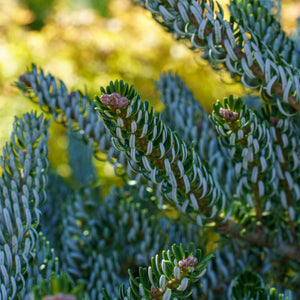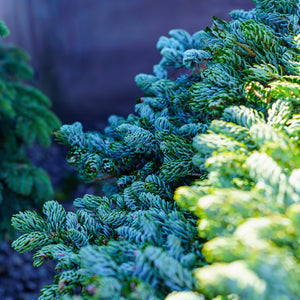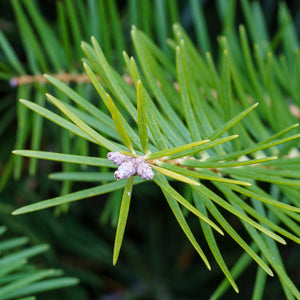The Fir Guide
Firs (genus Abies) are majestic, evergreen conifers known for their symmetrical shape, aromatic needles, and prominent cones that stand upright on the branches. Revered for their beauty and durability, firs are often used as specimen trees, focal points in large landscapes, and of course, as traditional Christmas trees. Their soft, flattened needles, pleasant fragrance, and elegant structure make them prized additions to gardens where year-round greenery and formal elegance are desired.
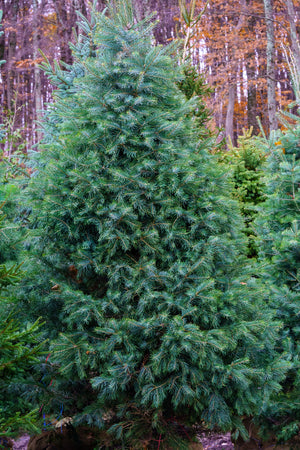
About
The Abies genus includes a diverse range of species native to North America, Europe, and Asia, each offering unique ornamental qualities and environmental adaptability. Among the best-known species is Abies balsamea, or Balsam fir, valued for its strong fragrance and dense form. Abies fraseri, the Fraser fir, is similarly esteemed, particularly in colder regions where its compact habit and strong branches make it a premier choice for holiday displays.
Other notable species include Abies concolor (White Fir), recognized for its long, blue-green needles and tolerance to dry conditions, and Abies nordmanniana, or Nordmann fir, widely planted for its deep green, glossy foliage and excellent needle retention.
Dwarf and specialty cultivars extend the appeal of fir trees to smaller landscapes and gardens. Abies koreana varieties such as 'Horstmann’s Silberlocke' and 'Ice Breaker' feature distinctive silver-backed needles and compact forms perfect for ornamental plantings. Abies lasiocarpa arizonica 'Glauca Compacta', also known as the Blue Compact Rocky Mountain Fir, offers striking blue-gray coloration in a compact, tidy shape ideal for smaller spaces.
Whether towering giants like Abies procera 'Glauca Prostrata' or miniature marvels like Abies koreana 'Starker’s Dwarf', firs bring stately presence, texture, and evergreen color to a wide variety of settings.
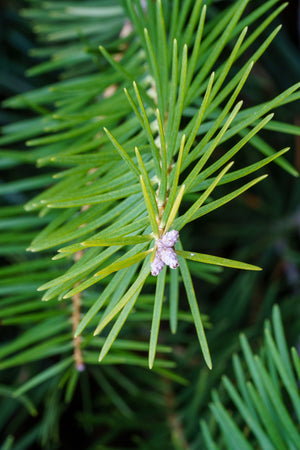
PLANTING
Proper planting ensures fir trees establish well and develop into healthy, vigorous specimens.
USDA Hardiness Zones: Most fir trees thrive in Zones 3–7, although some, such as Abies firma (Momi fir), are suited for warmer climates up to Zone 8.
Soil: Fir trees prefer cool, moist, well-drained soils rich in organic matter. They do not tolerate heavy, waterlogged clay well.
Sunlight: Full sun is ideal for most firs to maintain their dense foliage and symmetrical shape. Some species tolerate partial shade, but growth may be less vigorous.
Watering: Regular watering is crucial during establishment. Mature firs prefer evenly moist soil but are relatively drought-tolerant once fully rooted, especially species like Abies concolor.
Spacing: Space firs according to their mature size. Large species like Abies balsamea and Abies nordmanniana should be planted 20–30 feet apart. Dwarf forms like 'Starker’s Dwarf' can be placed much closer, typically 4–6 feet apart.
Planting Time: Plant fir trees in early spring or early fall to allow roots to establish before temperature extremes. Avoid planting during midsummer heat.
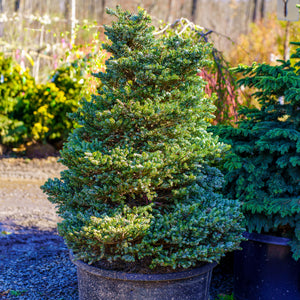
CARE
Fir trees are relatively low-maintenance but benefit from regular care to ensure longevity and continued health.
Watering: Deep, consistent watering is especially important during dry periods. Newly planted trees should be watered weekly.
Fertilizing: Apply a slow-release, balanced fertilizer in early spring if growth appears sluggish. Avoid high-nitrogen fertilizers that can promote weak, spindly growth.
Pruning: Prune fir trees minimally, focusing on removing dead, diseased, or damaged branches. If shaping is needed, prune in late winter while the tree is dormant, preserving the natural conical form.
Pests & Diseases: Common issues include fir adelgids, aphids, and root rot. Monitoring for early signs of infestation or fungal issues and maintaining healthy growing conditions greatly reduces problems.
Mulching: Mulch around the base with a 2–3 inch layer of organic material to retain moisture, suppress weeds, and regulate soil temperature. Keep mulch a few inches away from the trunk to prevent rot.
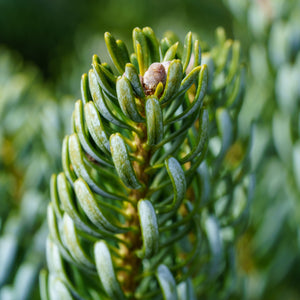
HOW TO USE
Firs bring refined beauty, structure, and evergreen stability to a wide range of landscape designs.
Specimen Trees: Large firs like Abies nordmanniana and Abies balsamea serve as stunning focal points in spacious lawns or parks.
Foundation and Accent Plantings: Dwarf and compact varieties such as Abies koreana 'Ice Breaker' and Abies lasiocarpa arizonica 'Glauca Compacta' are excellent for foundation beds, rock gardens, and smaller landscapes where year-round interest is desired.
Holiday Displays: Species such as Abies fraseri and Abies balsamea are favored for live Christmas trees due to their sturdy branches, symmetrical form, and fragrance.
Mixed Borders: Fir trees combine beautifully with broadleaf evergreens, ornamental grasses, and shrubs like Rhododendron and Ilex, offering textural contrast and winter color.
Slope Stabilization: In larger landscapes, fir trees can be used in groups to stabilize slopes and prevent erosion while maintaining an attractive evergreen screen.
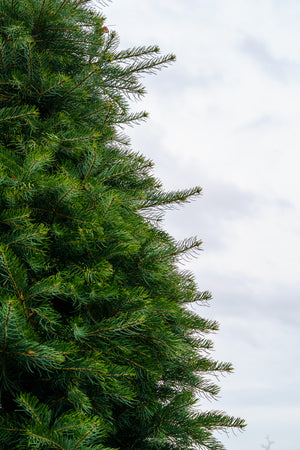
Common Questions
What is a fir tree? A fir tree is an evergreen conifer belonging to the genus Abies. Characterized by upright cones, aromatic, flattened needles, and a naturally symmetrical shape, fir trees are prized for their ornamental beauty and hardiness.
Are fir trees toxic to dogs? Fir trees are generally considered mildly toxic to dogs. Ingesting needles or sap may cause mild gastrointestinal upset such as drooling, vomiting, or diarrhea.
Are fir trees toxic to cats? Similar to dogs, fir trees can cause mild gastrointestinal upset if cats chew on the needles or ingest sap, but they are not considered highly toxic.
How to prune a fir? Minimal pruning is recommended. Prune fir trees in late winter to remove any dead, broken, or diseased branches. Always retain the natural leader (main central trunk) to maintain a strong, symmetrical form.
How to plant a fir? Choose a sunny, well-drained location. Dig a hole twice as wide but no deeper than the root ball. Set the tree at the same depth it grew in the nursery, backfill with native soil, and water thoroughly. Mulch lightly around the base, avoiding direct contact with the trunk.
Does a fir need full sun? Most fir species perform best in full sun, developing denser foliage and maintaining their ideal shape. Partial shade is tolerated by some varieties but may result in looser growth and less vibrant needle color.
Conclusion
Fir trees are timeless symbols of strength, grace, and enduring beauty. Whether anchoring a grand estate, adding year-round interest to a modest garden, or becoming the centerpiece of a holiday tradition, firs offer exceptional versatility and charm. With careful selection and thoughtful placement, fir trees bring structure, elegance, and lasting value to landscapes of all sizes.
The Fir Collection
Sold Out
Sold Out

